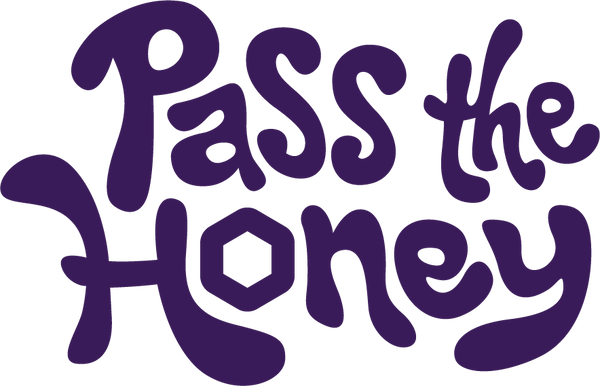The human fascination with honey is nothing new. Our ancient forefather's sculpted bees, idolized bees, and even worshipped bees. Honey is present in Hindu-Indian creation myths, and its healing properties have been used in remedies and rituals since first discovering the golden nectar.
If you’ve ever used honey for health reasons or its sheer deliciousness, it’s easy to see why honey has established itself as such a core commodity. It’s also easy to see why honey has become prone to counterfeit and replicas that are assuredly no substitute for the real thing. To be confident that you’re not purchasing fake honey, here’s what you need to know.
What is Real Honey?
Organic Honey
Simply put, organic honey is that which comes from bees that have fed on organic flowers. As with all organic food substances, honey will be marked with a certification from the country of origin (i.e., the USDA Certification or EU Food Law) to approve it as such. The key agenda for honey to constitute as organic is as follows:
- Surrounding Area – All product grown in the surrounding miles (within the bee’s flight path) must be organic, with no contact from pesticides or steroids.
- Hive Material – The beehives must be completely organic and not made from any unapproved synthetic materials.
- No Syrup – The bees cannot be fed syrup, nor can any additional syrup be added to the honey during the bottling process.
Laws on organic produce are far stricter within the EU, South America, and Australia. Honey critics attest that the USDA A-Grade honey should arguably not be credited as true organic or “100% pure” because certain “organic honey” has been blended with cheap sweeteners.
Pasteurization
Much of the honey sold in the USA has been through a process of pasteurization. While this process has its benefits, it arguably dilutes the raw goodness of the honey, thus rendering it ‘fake’, or certainly less pure.
During the pasteurization process, the honey is heated to eradicate yeast and enzymes. This ensures that the honey is less prone to fermentation, therefore granting it a longer shelf life. However, it is these crucial enzymes that are responsible for activating the vitamins and minerals that benefit the human body. By increasing the shelf value of the honey, you actually lose some of the key health benefits that make it such a precious, natural ingredient.
Honeycomb vs Liquid Honey
The physical constitution of honey can tell you a lot about its authenticity. Honeycomb is the rawest and purest version of honey on the market, often broken into pieces, sealed, and sold directly to the consumer. Liquid honey, however, can be harder to differentiate. Although the differences become noticeable when left in your cabinet over time.
Where real honey will crystallize, fake honey is likely to remain in liquid form even well beyond its use-by date. The reason is that the latter has been diluted with a corn syrup that is high in fructose, making it likely to remain pourable forever.
To be sure you’re using an unpasteurized, untampered with honey, the best option is whole honeycomb.
Pollen Status
As a consumer, it is hard to gauge what we consider to be true honey as opposed to fake honey. For some, the nostalgic taste of syrupy goodness squeezed over your breakfast is the real deal. For others, it’s only real if there’s a satisfying crunch of the honeycomb.
Unfortunately, when served as a pasteurized liquid honey, rid of the textures of honeycomb, you eradicate the nutritious goodness stored in the beeswax. More so, the pollen quality drops considerably.
This is highly contested within the world of honey. The American Beekeeping Federation professes that the pollen count should be the key indicator of whether honey is considered real or fake. In their eyes, unpasteurized honey, straight from the comb, is the only true source.
Added Syrups
Can you imagine defiling the delicious, natural goodness of honey with even more sugar? You would be surprised how many companies do just that. Catering to the taste buds of a changing generation who consume sugar in almost every processed food, many companies are adding syrups to their honey line, in order to make the product more appealing.
While the FDA requires any such products to specify with an ‘Added Sugars’ warning, the American Beekeeping Federation protests that this might have a “negative impact on the pure image of honey.” The two organizations are currently in negotiations over the matter.
The Final Check
Finally, the best way to guarantee that your honey is authentic is to check the packaging. This quick checklist gives you a structure of what to look for to make sure that you aren’t settling for a knock-off.
- Location – Is the company open about their sourcing and packaging location? If the answer is no, then there is likely a process of pasteurization somewhere along the supply route.
- FDA Approval – Is the honey certified organic by the FDA?
- Location Accreditation – Does the honey have the stamp of approval from the source countries’ Beekeeping Association?
- Added Sugars – Are there added sugars or syrups labeled on the bottle or ingredients?
When in doubt, always go back to the source. Raw, unpasteurized honeycomb will give you all the health and taste benefits of pure honey. No tricks. No gimmicks. That way you’ll never have to settle for anything less than genuine, nutritious, real honey.
Sources:
SFGate, If its American Honey, Its Likely Not Organic, https://www.sfgate.com/news/article/If-it-s-American-honey-it-s-likely-not-organic-3256294.php
American Beekeeping Federation, About Honey, https://www.abfnet.org/page/13
American Beekeeping Federation, 2017 ABF Legislative Priorities, https://cdn.ymaws.com/www.abfnet.org/resource/resmgr/files/2017_ABF_Legislative_Proirit.pdf
